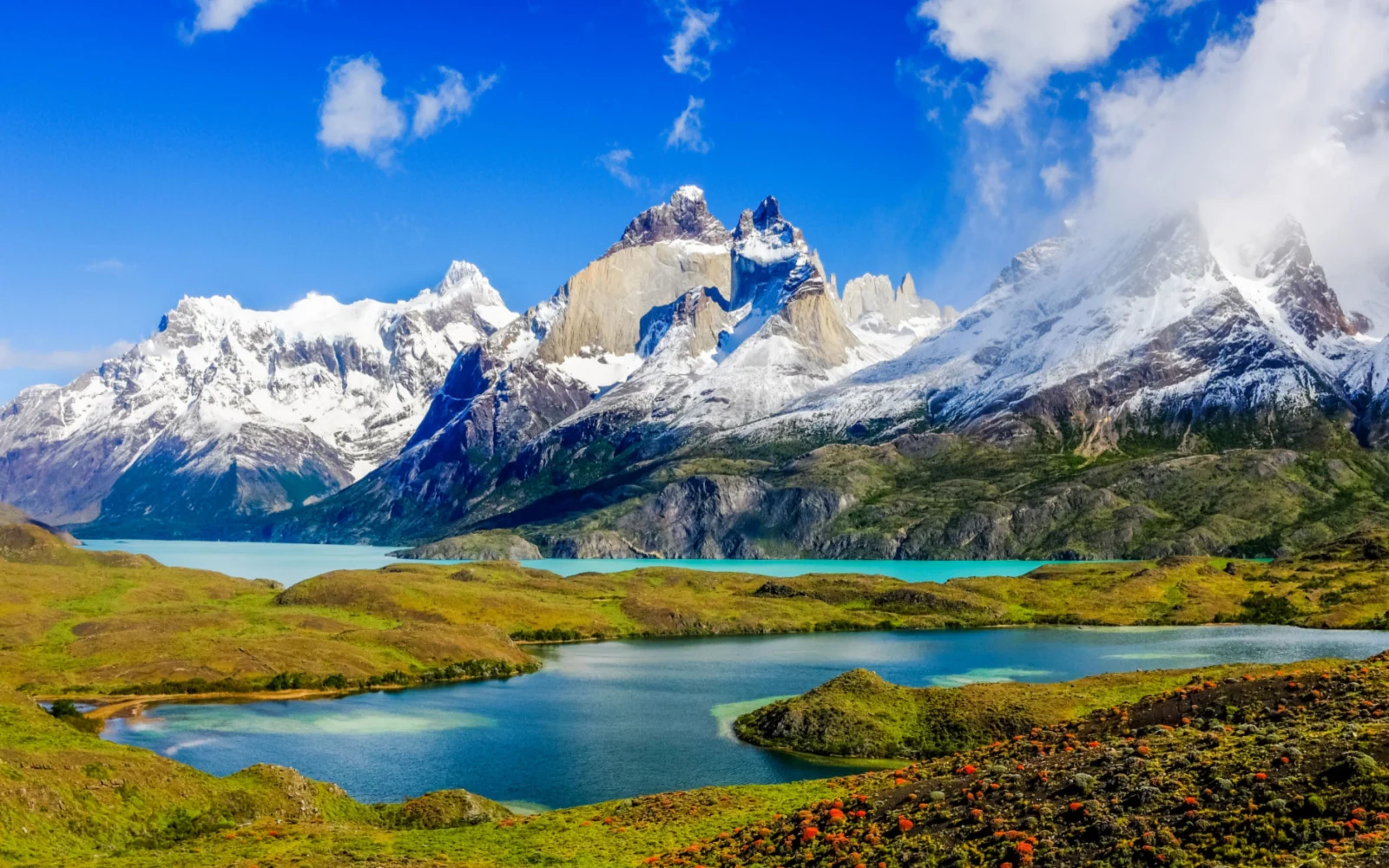What's the best time to visit Patagonia?
The best months to visit Patagonia are from November to March when it’s summer in the Southern Hemisphere. You’ll enjoy the milder weather, perfect for hitting the trails or spotting wildlife, with warmer days averaging 77°F (25°C) and plenty of daylight. Sure, it’s the peak season, so expect more company, but that also means lively hiking lodges and fun local festivals to visit.
Patagonia, the southernmost region of South America, has wild beauty that is found almost nowhere else on Earth. It’s home to some of the most spectacular treks and hikes in the world, such as the famous W Trek in Torres del Paine National Park in Chile.
Visitors can take in craggy Andean mountains, groaning glaciers, and some of the clearest lakes and rivers in the world. Besides the landscape, Patagonia is also home to penguin colonies, prehistoric art and fossils, and quaint towns like Punta Arenas.
While it’s a destination like no other, you’ll make the most of it if you visit at the right time. We’ll show you this and more below; let us be your guide!
The Overall Best Time to Visit Patagonia
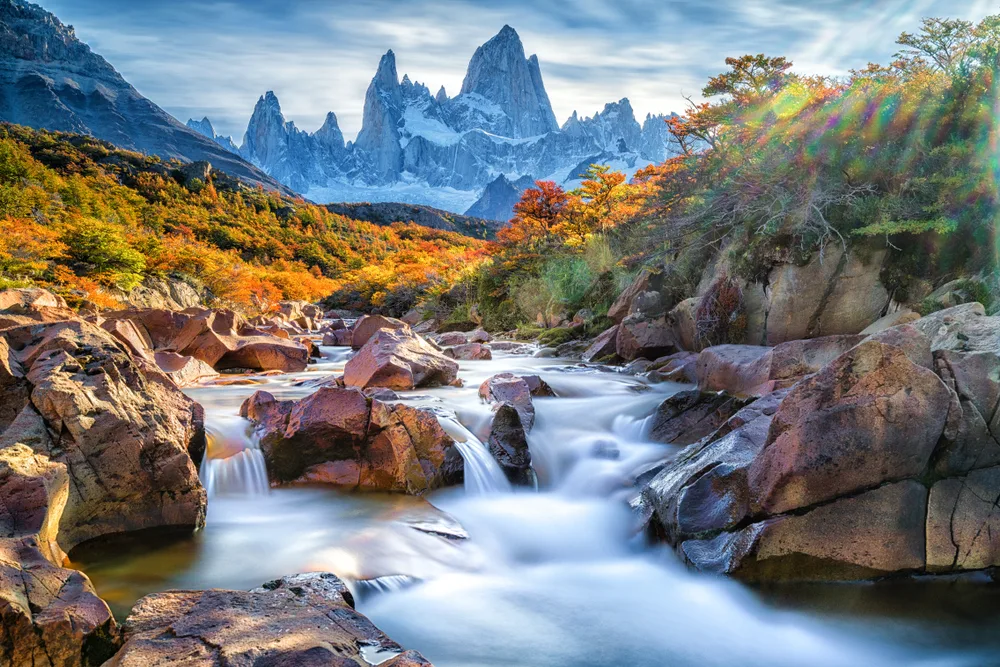
Sharptoyou/Shutterstock
The best time to visit Patagonia is from November to March, which is Patagonia’s summer high season, as the most outdoor activities are possible during this time.
Patagonia is located in the Southern Hemisphere, which means that the seasons are switched compared to what visitors from North America or Europe may be used to.
In South America, summer actually runs from November or December to March. This means that Patagonia has a cold, harsh climate for most of the year, but in the summer, temperatures are somewhat milder.
You shouldn’t expect plenty of heat (Patagonia is located at high altitudes and geographically close to the South Pole), but it will be more pleasant than during the dead of winter.
Average daily high temperatures throughout the summer are about 77 degrees Fahrenheit (25 degrees Celsius). Even in the middle of summer, nights can get very chilly, with average daily lows at about 52 degrees Fahrenheit (11 degrees Celsius), and even colder at high altitudes.
Thanks to the warmer temperatures, it is far more bearable to spend days on end outside, and finding the right gear is much easier than during the winter.
The warmer temperatures also mean that most of the snow has melted and important trails are passable. The days are also longer, so you don’t have to worry about the dark catching you on the trail.
These are the best conditions for outdoor activities like:
- Hiking
- Backpacking
- Trekking
- Cycling
Summer is also the best time to visit the area around Patagonia’s Lake District and Bariloche. You can get out onto the water with boat tours, rowboat rentals, and more. This season also has some of the best opportunities for wildlife spotting.
Migrating whales like Southern right whales spend time around Patagonia during the region’s summer. January, February, and March are the best times to see baby penguins and elephant seals.
Summer is definitely the busiest season in Patagonia, and accommodations are more expensive and booked well in advance. However, there are some benefits for this.
This is a great time to meet fellow hikers and the atmosphere in refugios, or hiking lodges, is usually pleasantly social. This is also the peak festival season in the local region, and you can participate in local events like asados or barbecues to get a glimpse of the unique local culture.
Cheapest Time to Visit Patagonia
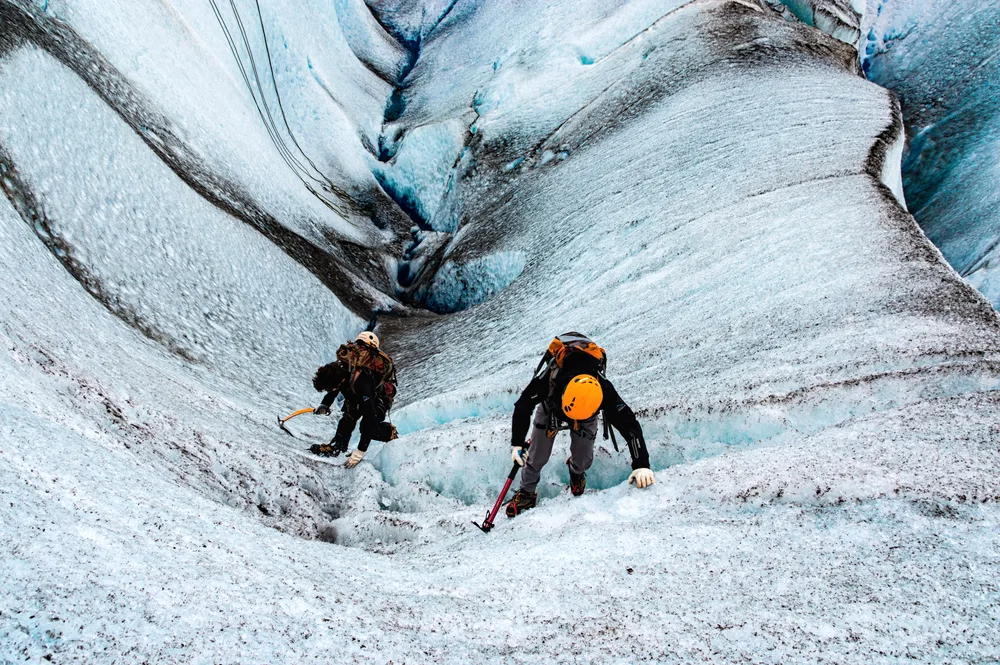
Benedikt Juerges/Shutterstock
The cheapest time to visit Patagonia is the spring (September to November) or fall (March to May), which are less popular with visitors.
Spring and fall are the shoulder seasons in Patagonia, and visitor numbers are much lower than they are in the summer. This means that the prices of many travel-related expenses also go down as businesses try to attract the remaining visitors.
Accommodation is one of the priciest expenses associated with a trek through Patagonia, but the prices tend to decrease drastically during shoulder season.
Lodges and refugios in Torres del Paine are usually 25% to 30% less expensive than they are in the peak season, with some hotels even offering discounts up to 50%. There are a few different ways of getting to Patagonia, all of which are cheapest during the shoulder season.
Some people fly into Ushuaia, which has the cheapest airfare in November or May (you want to avoid the summer peak season and the winter ski season). Flights to other airports in Chile and Argentina are also usually cheaper during this time.
Least Busy Time to Visit Patagonia
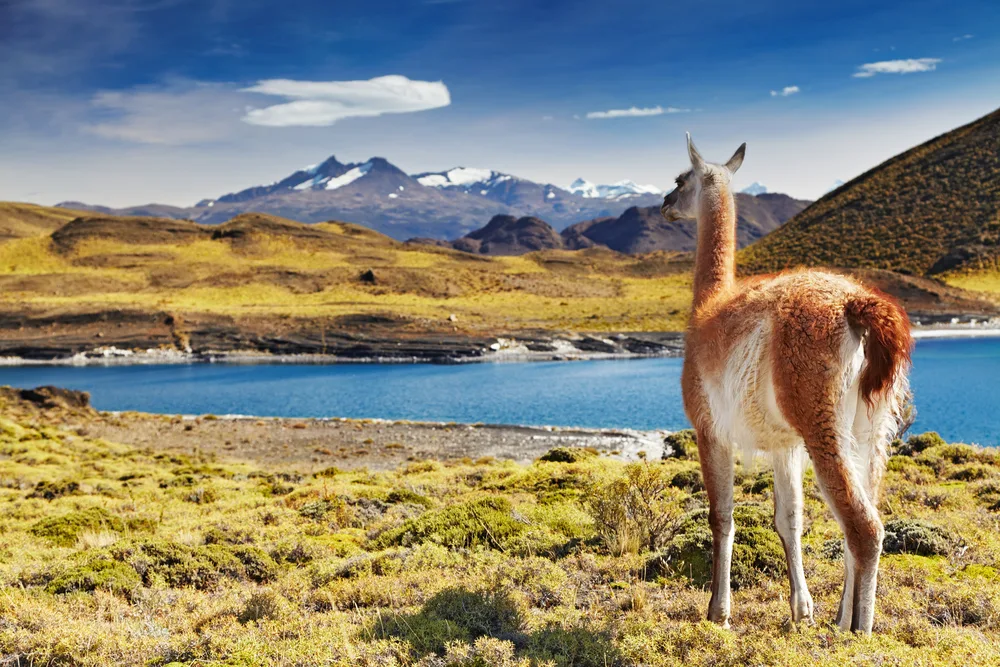
Dmitry Pichugin/Shutterstock
The least time to visit Patagonia (to beat the crowds but still enjoy the best of the outdoors), is in the spring or the fall. The fall still has some people around, but it’s worth visiting because the weather and landscape are beautiful.
Average temperatures in Punta Arenas are around 42 to 50 degrees Fahrenheit (6 to 10 degrees Celsius). The weather can be rainy, so you’ll need waterproof gear.
Fall is worth visiting because of the spectacular foliage. While many places around the world boast spectacular leaf displays, none are as special as in Patagonia, thanks to the dramatic backdrop. This time to visit is a photographer’s dream, although it can get a bit crowded around Holy Week.
Spring boasts even fewer crowds, and the landscapes are just as beautiful. Some places at higher altitudes may still be inaccessible, but trails at lower altitudes are starting to clear up.
You’ll have the landscape all to yourself, which will feel even more special when the wildflowers begin to bloom. However, spring weather is a bit harsher than in the fall. The skies tend to be clearer; the average rain days decrease in most of Patagonia once spring arrives.
However, the season brings with it very harsh winds that make the daily temperatures feel even colder. If you are visiting during the spring, make sure that you bring plenty of warm clothes to wrap up.
Worst Time to Visit Patagonia
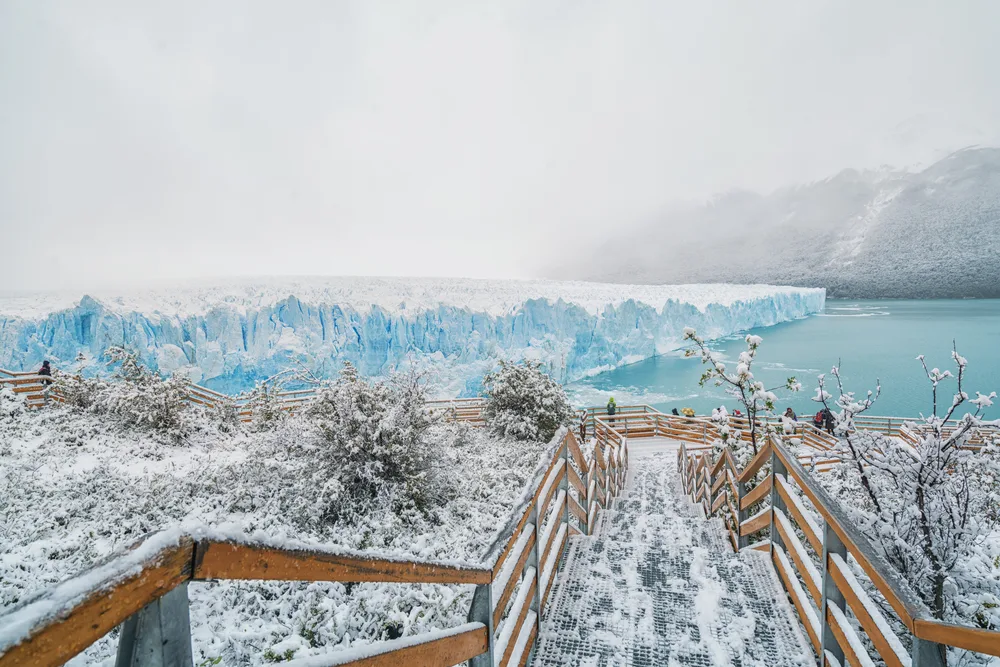
Sharptoyou/Shutterstock
The winter brings cold weather to Patagonia and heaps of snow, making it one of the worst times to visit the region. Due to its location close to the South Pole and its very high altitudes, winters are no joke.
From May to September, in the south or high up in the mountains, temperatures usually hover around freezing. There are only about six hours of daylight in the day, shortening the amount of time that you can spend on the trail.
Traveling in the winter is a bit more difficult for logistical reasons. The snow and winter storms often shut down roads and trails, including the famous Carretera Austral. Many businesses, from restaurants to hotels, shut down completely during the off-season.
National parks close partially or completely, and places such as Los Glaciares National Park drastically shorten their opening hours.
Intrepid visitors ready to brave the Patagonian winter are rewarded with surprises that most visitors will never notice. Winter is one of the best times to spot wildlife such as pumas, as the scarcity forces them to be more active.
This season is also the best for taking advantage of the region’s ski resorts, like Catedral Alta Patagonia. The locals do their best to warm up with plenty of events and festivals, and winter is one of the liveliest seasons in many nearby towns.
The Snow Festival in Bariloche lasts all winter long and is a family-friendly event with fireworks, races, and more. Ushuaia hosts the Longest Night in the World festival on June 21st each year, chasing away the darkness with bonfires and fireworks.
Frequently Asked Questions
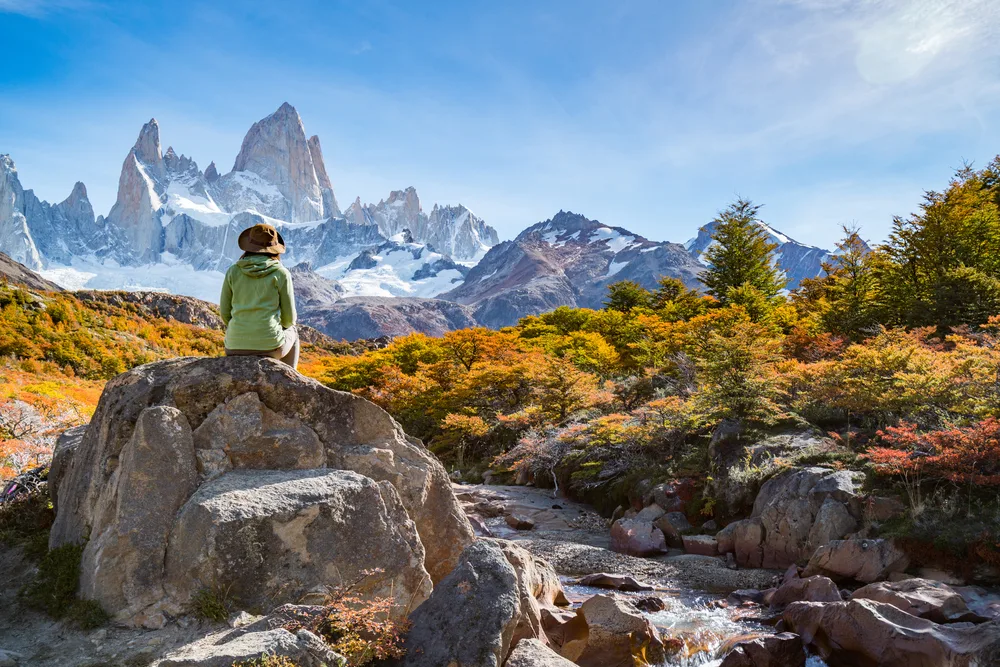
Sharptoyou/Shutterstock
Here are a few of the most common questions asked to help you find the best time to visit Patagonia:
What is the best month to visit Patagonia?
Any month between December and March is the best month to visit Patagonia as the region comes alive during the warmer summer weather.
How many days do you need in Patagonia?
You need at least 14 days to explore all that Patagonia has to offer because the region is vast and has several important national parks.
Is Patagonia better in Chile or Argentina?
The answer depends on what you’re looking for. Argentinian Patagonia is bigger and more diverse, containing pampas and lakes in addition to the mountains. However, Chile has more famous landscapes like Torres del Paine.
Is it expensive to go to Patagonia?
Patagonia is fairly expensive to visit. Hotels and lodges are pricey during the peak season, and the cost of arranging treks or excursions is also high since you need permits, entry fees, and maybe a guide.
When not to go to Patagonia?
Avoid Patagonia in the winter (June, July, and August) because the temperatures are very cold, and many attractions are closed.
So, What’s the Best Time to Go to Patagonia?
Patagonia is beautiful all year round, but you’ll get the most out of your visit if you come during the summer. The weather is the best and all the attractions are open; plus, the landscapes are spectacular.
So, with so much to see and do and plenty of amazing times to go, what are you waiting for — book your trip today and experience for yourself all that Patagonia has to offer. Happy travels!



